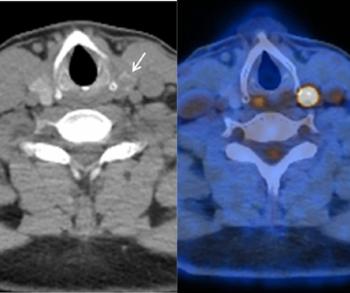
CT for Suspected Renal Colic Yields Incidental Findings
Non-enhanced CT scans for suspected renal colic often detect incidental findings.
More than 12% of non-enhanced CT scans performed in the ER for suspected renal colic detected important incidental findings (IFs), according to a study published in the
Researchers from Yale University School of Medicine in New Haven, CT undertook a retrospective record review to determine the prevalence, importance, and types of IFs in non-enhanced CT scans performed for suspected renal colic.
A total of 5,383 consecutive finalized reports of non-enhanced CT using renal colic protocol performed on 4,845 adult patients over a 5.5-year period were reviewed. The researchers defined IFs as those unrelated to symptoms, not as alternate causes of symptoms. If follow-up was recommended, based on recently published consensus recommendations, they were categorized as “important.”
The reviewers identified 875 important IFs in 681 CT scans (12.7%), with the prevalence increasing with patient age. Patients over 80 years old had 28.9% prevalence compared with 6.9% among patients aged 18 to 30. Although not statistically significant, the researchers also noted that women had a higher prevalence of IF (13.4%) compared with men (11.9%).
Most commonly found IFs:
Within the female pelvis, 122 of 159 important IFs (77%) occurred in the adnexa, 32 (20%) in the uterus, and 5 (3%) in the vagina.
The researchers concluded that further study be done using radiographic recommendations to characterize IF and examine the outcome and cost of workup.
Newsletter
Stay at the forefront of radiology with the Diagnostic Imaging newsletter, delivering the latest news, clinical insights, and imaging advancements for today’s radiologists.



























